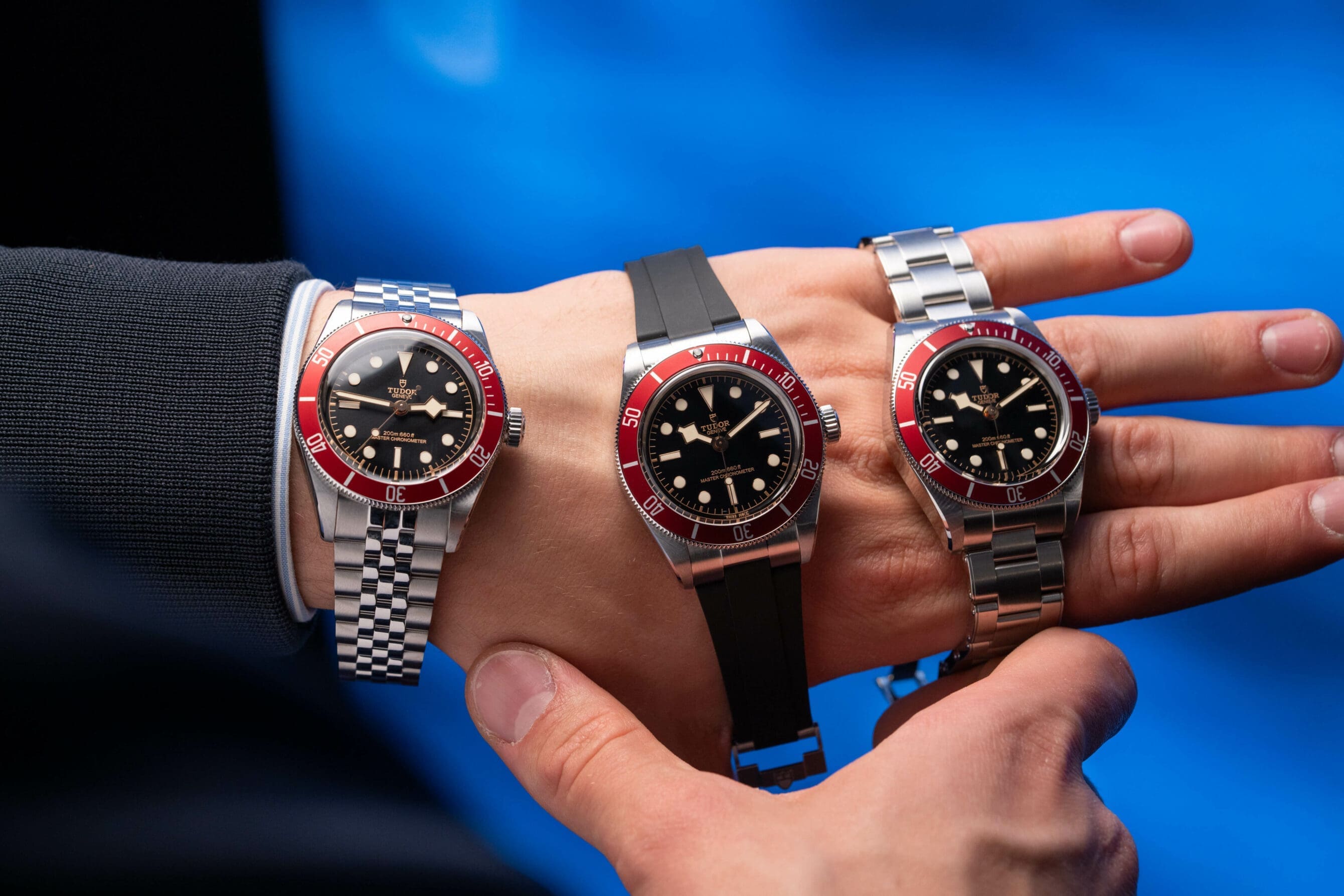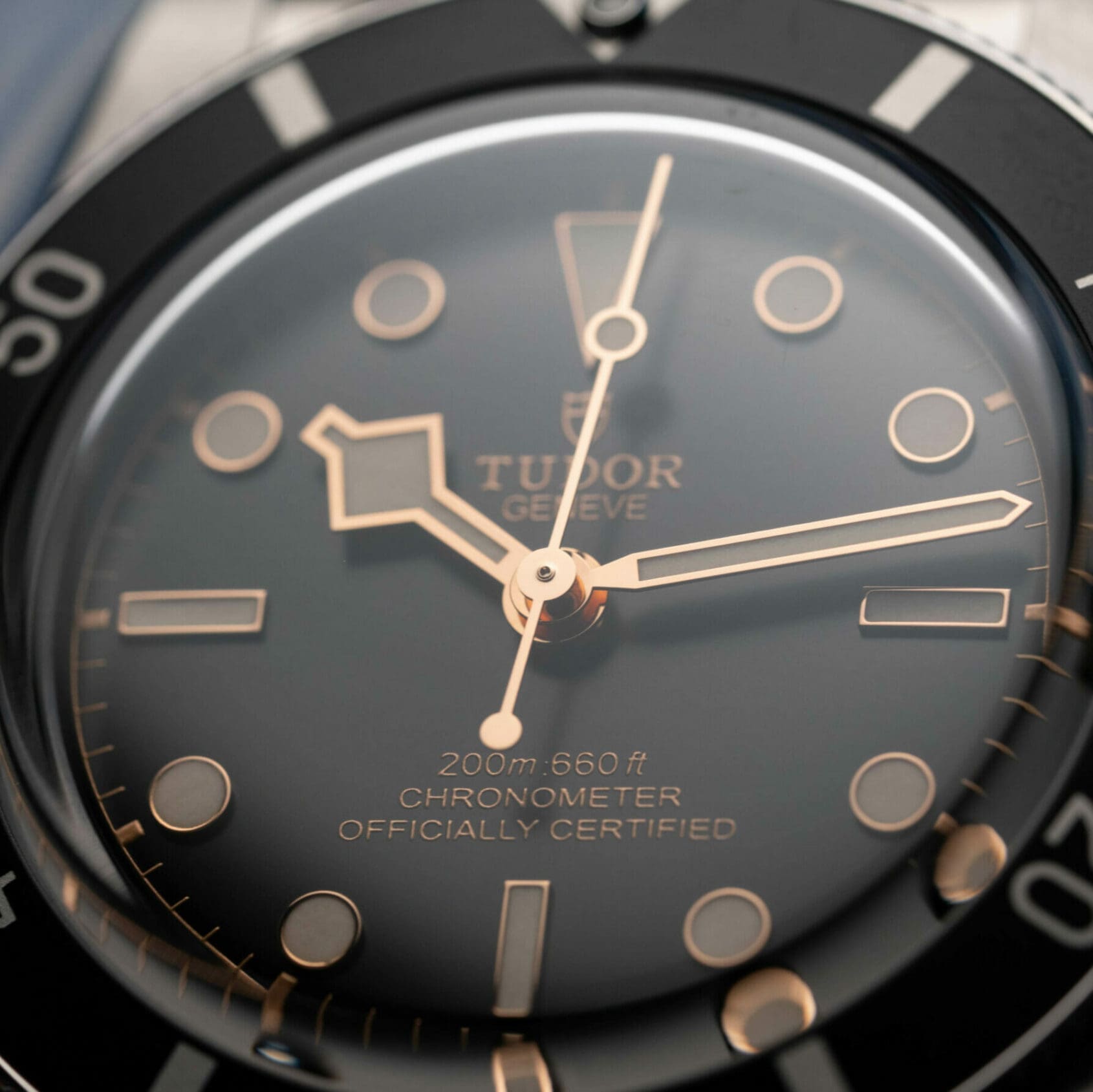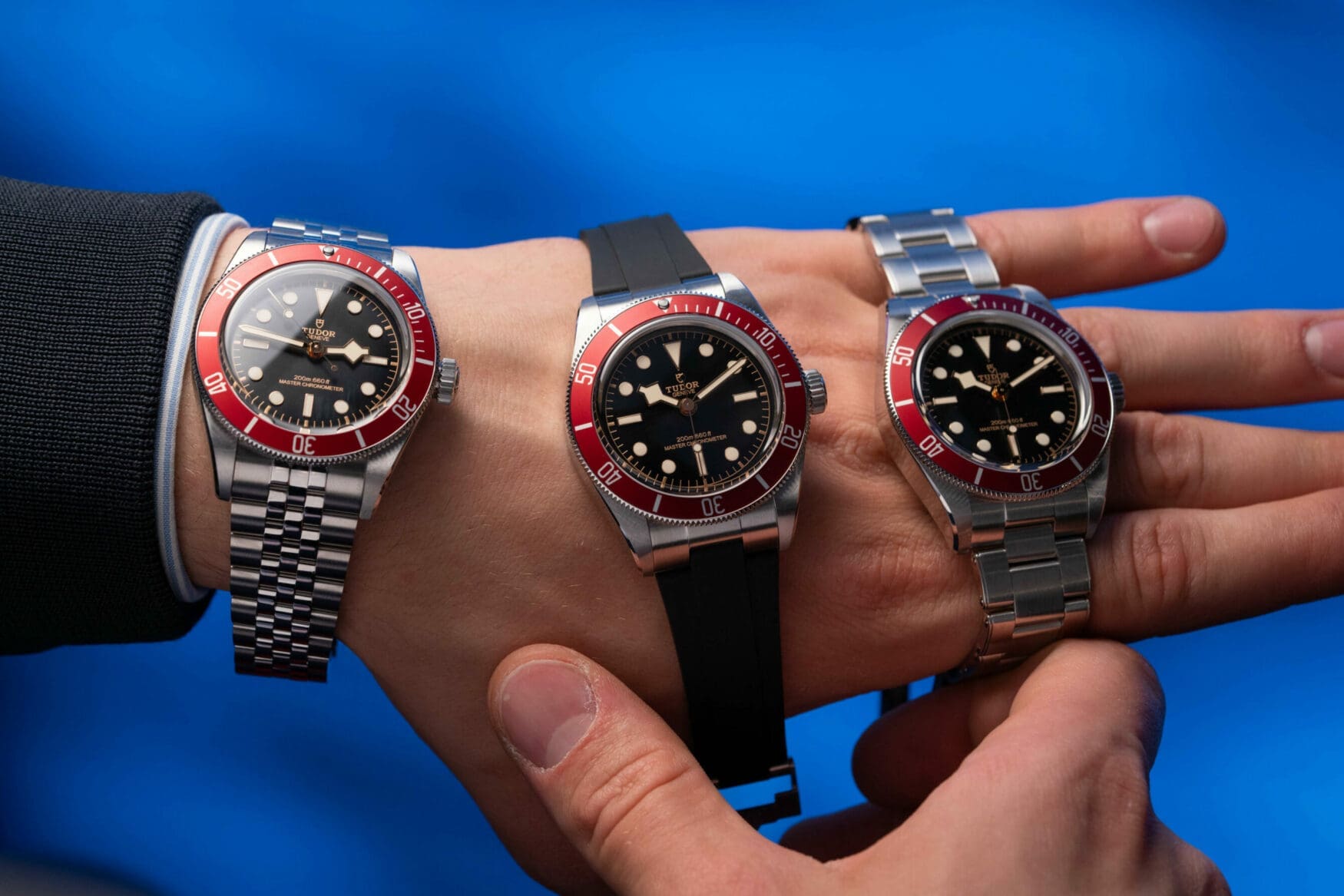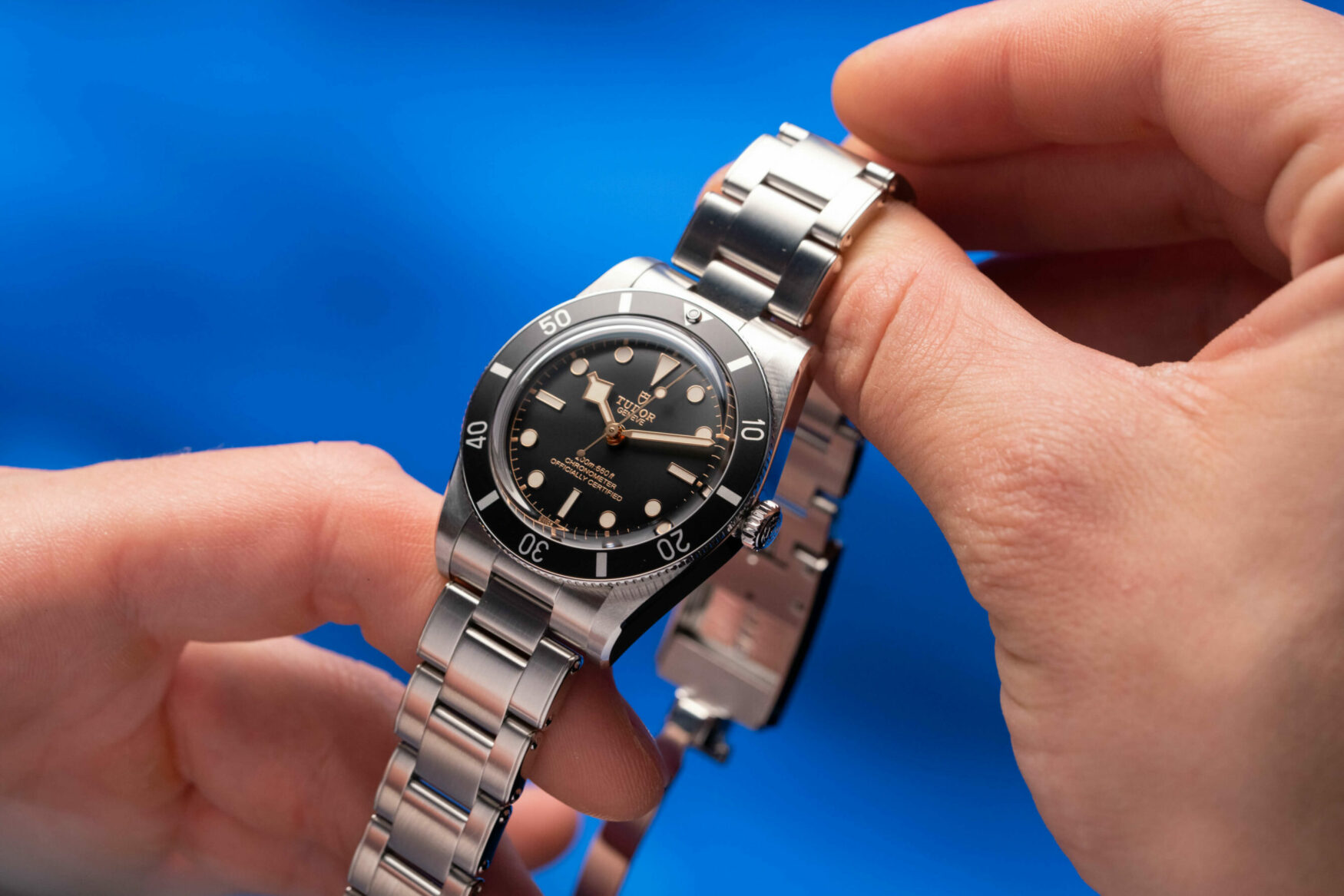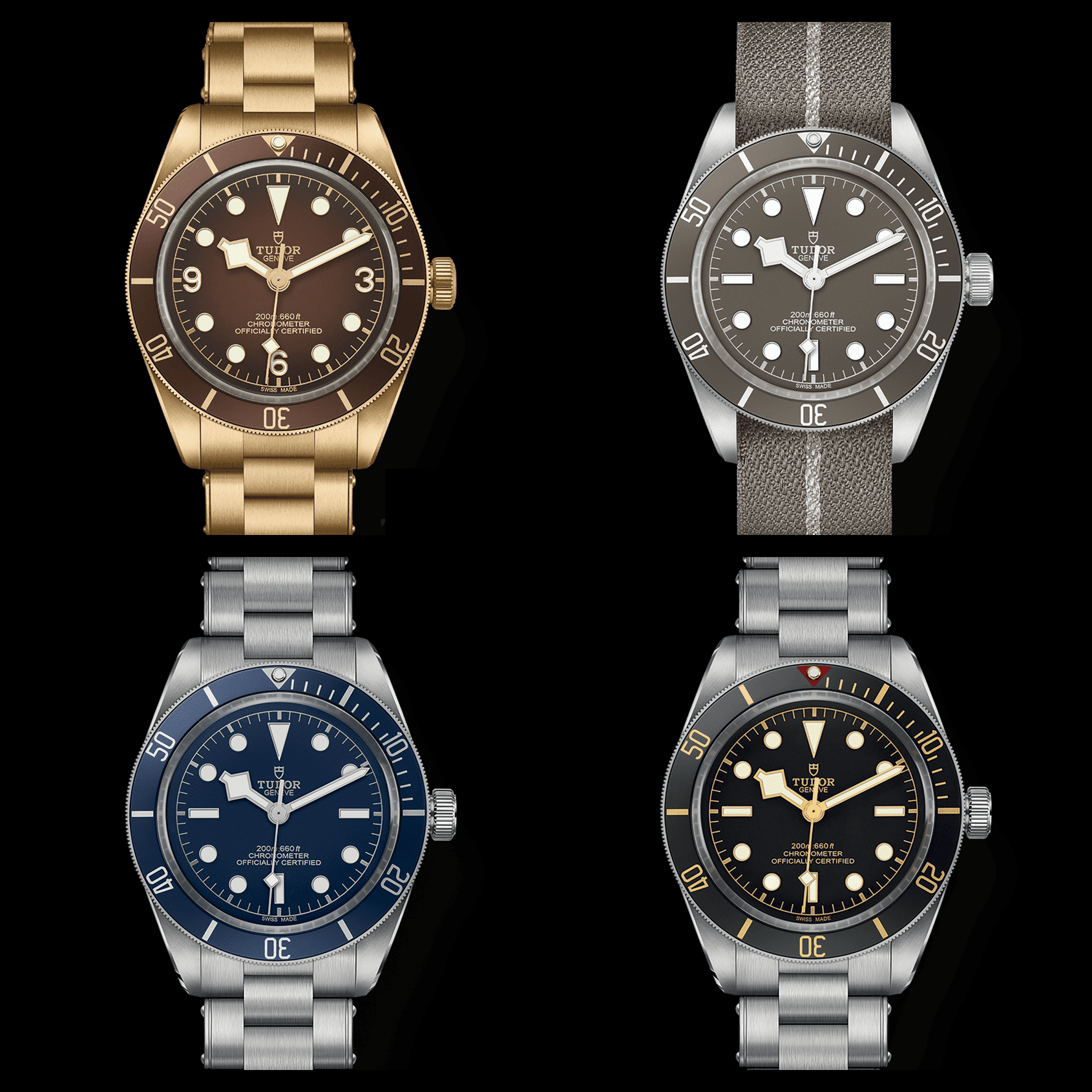With the new Tudor Black Bay 41 and Black Bay 54, is the BB58 in danger of becoming obsolete?
Zach BlassThe response to the new Tudor Black Bay 54 has been massive, with many on our Instagram dubbing it the release of the fair and, on my end, making it onto my top five favourite releases of Watches & Wonders 23. But that was not the only fan-certified win from Tudor this year. The slimmer upgraded Tudor Black Bay 41 has also received a lot praise from the watch community as well. With the proposition that the Black Bay 54 and Black Bay 41 present, the question has been raised: in the wake of all of this, where does the BB58 really stand?
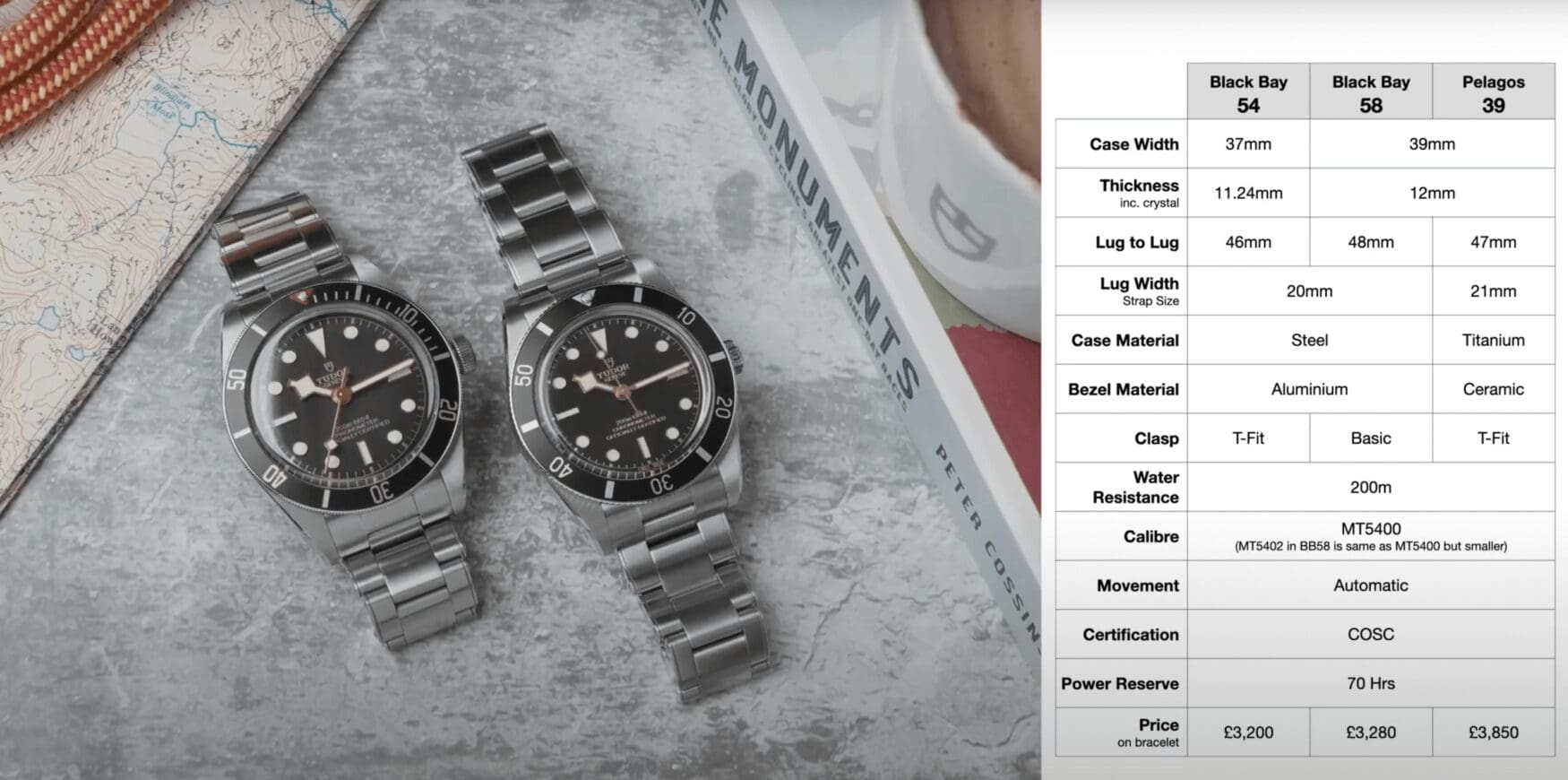
On paper, the differences between the Black Bay 58 and the new Black Bay 54 are very minute – it is literally 2mm. The diameter has been shaved down from 39mm to 37mm, the lug-to-lug down from approximately 48mm to 46mm, and the 54 is a touch more slim than the 58 with a thickness of 11.24mm (Black Bay 54) down from 11.9mm (Black Bay 58). On the wrist, however, it has big ramifications. The Black Bay 54 is as close as you can get in the modern era in regard to a Wilsdorf-produced dive watch and is within half a millimetre of the original Submariner watch. As a result of these shaved millimetres in width and length, the more macho will shun the 54 as a too-tiny-diver.
The original draw of the BB58 was its much slimmer build – the more compact 39mm diameter was really the secondary win for those who believe 40mm+ watches are too big for their wrists. Considering it was only 2mm smaller in diameter than the 41mm, those with average or larger sized wrists still gravitated towards the BB58 due to the fact it was considerably less thick – again, the BB58 was 11.9mm thick while the previous Black Bay Heritage 41mm was a rather slab-sided 15mm thick. At 15mm, it was a far cry from the sub-13mm thickness of the Rolex Submariner. It may seem small, but once a watch stretches beyond 13mm or so in thickness it becomes drastically more noticeable in its wear on the wrist. So, with the new trio of Black Bay 41mm divers, the slimmed down 13.6mm profile is a huge deal – not to mention the addition of the T-fit clasp, a five-link bracelet and rubber option alongside the familiar faux-rivet bracelet, and a Master Chronometer-certified calibre.
Without an update this year, and, with the introduction of the new Tudor Pelagos 39, Tudor has placed the BB58 in a less stable position amongst their offerings. In a way, it is the iPhone 12 in a world where you can now purchase the iPhone 14. There is nothing abysmally wrong with the BB58 by any means, it was the peak of Tudor’s offering for years. But, now this former reigning champion of their catalogue has been noticeably left in the dust in my books.
From my perspective as a smaller-wristed collector (~6.5 inch wrist) there is no longer any draw towards the BB58. At 37mm and 46mm lug-to-lug, it is an incrementally better fit for my wrist. And, with T-fit, it eliminates the glaring problem that led me to sell and leverage both the original BB58 and BB58 Navy Blue in different watch trades. I could never find a perfect fit with the Black Bay 58, it was always either a touch too snug or too loose – something the 54’s T-fit clasp immediately solves.
Assuming the perspective of a larger-wristed collector, I would imagine the new slimmer trio of 41mm Black Bay eliminates any candidacy the Black Bay 58 had as a purchase contender. Sure, it still is a few millimetres thinner, but the BB58’s lack of T-Fit and Master Chronometer certification certainly makes it feel outdated by comparison.
That being said, the Oyster Perpetual 39mm – in a world where only the OP is only available in 31mm, 36mm and 41mm – has been sorely missed by collectors online. Andrew himself penned a story lamenting its removal from the catalogue. So, the only saving grace of the BB58 really is its goldilocks status for some wrists. If the Black Bay 54 is the over the cliff fall into full-blown vintage proportions, the Black Bay 58 is effectively the cliff’s edge – the compact-modern 39mm and 48mm lug-to-lug package that serves as a stop gap to the 41mm and its 50mm lug-to-lug. The other advantage the Black Bay 58 does hold is its range of aesthetics and materials, available in 18K gold, silver, and bronze – materials which have yet to be used for these Watches & Wonders-debuting Black Bay 41 and 54 collections.
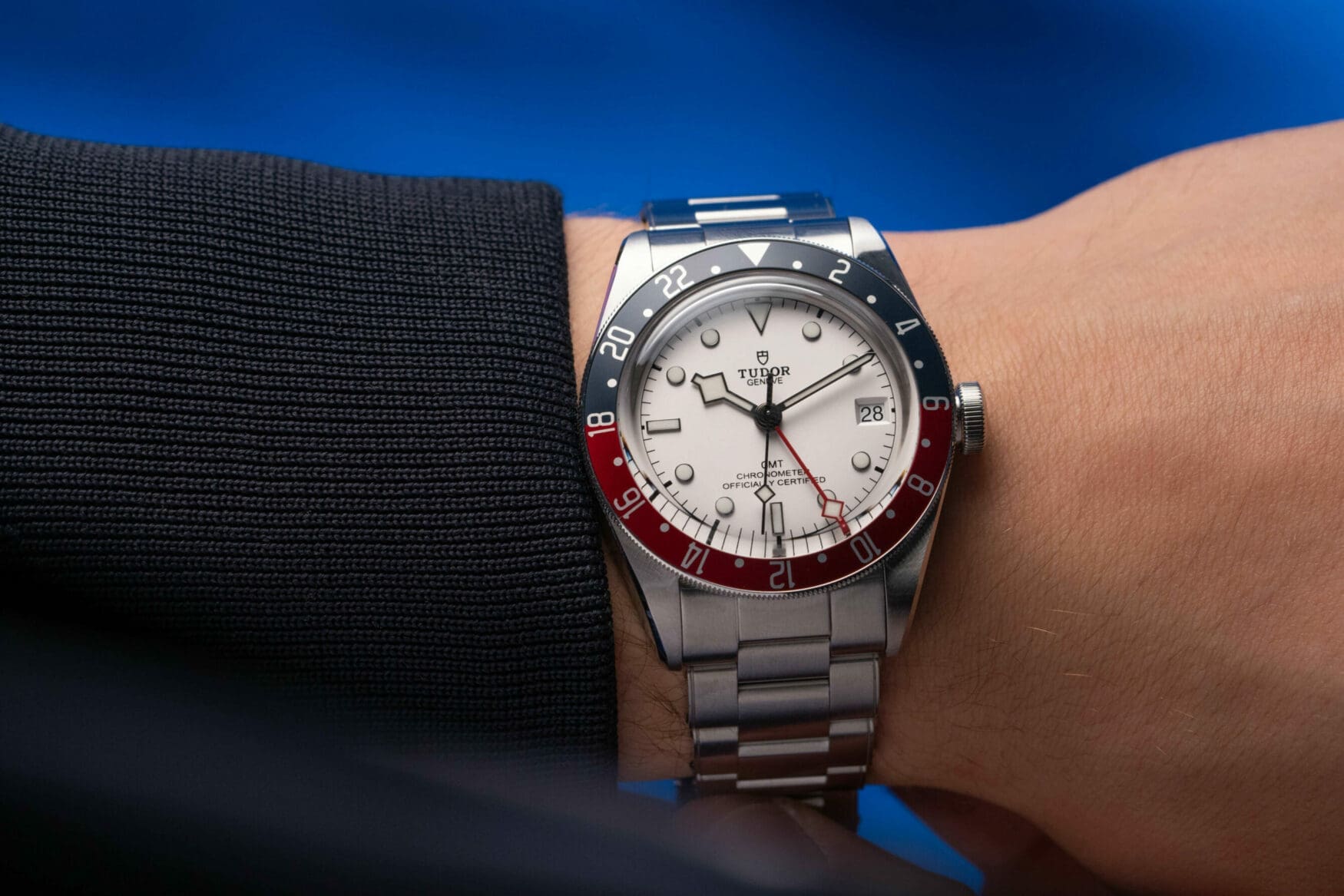
So, where does Tudor need to go from here in my book?
- The Black Bay 58 needs to either be discontinued, or brought up to spec with the 54 and new 41mm (I imagine the latter a more favorable option for all involved).
- A Black Bay 58 GMT would further distinguish its position within the collection, especially since the new Black Bay GMT with an Opaline dial remains on the beefier side.
- As the middle ground size of the Black Bay lineup, it should continue to have the widest range of colour and material options.




